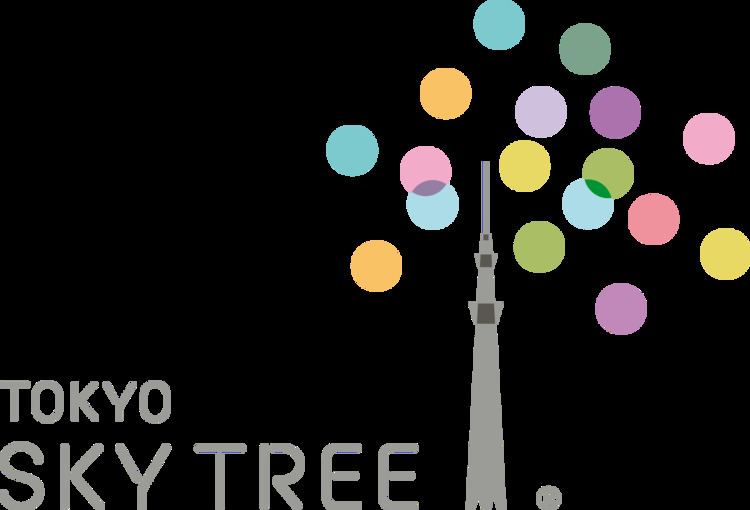Status Complete Floors 29 | Architectural style Neofuturistic Height 634 m | |
 | ||
Construction started 14 July 2008 (2008-07-14) Completed 29 February 2012 (2012-02-29) Hours Open today · 8AM–10PMSunday8AM–10PMMonday8AM–10PMTuesday8AM–10PMWednesday8AM–10PMThursday8AM–10PMFriday8AM–10PMSaturday8AM–10PMSuggest an edit Cost 65 billion JPY (806 million USD) Profiles | ||
Tokyo skytree
Tokyo Skytree (東京スカイツリー, Tōkyō Sukaitsurī) is a broadcasting, restaurant, and observation tower in Sumida, Tokyo, Japan. It became the tallest structure in Japan in 2010 and reached its full height of 634.0 metres (2,080 ft) in March 2011, making it the tallest tower in the world, displacing the Canton Tower, and the second tallest structure in the world after the Burj Khalifa (829.8 m/2,722 ft).
Contents
- Tokyo skytree
- Seeing japan s tallest building tokyo skytree guide
- Design
- Earthquake resistance
- Colour
- Illumination
- Naming and height
- Broadcasting use
- 2008
- 2009
- 2010
- 2011
- 2012
- 2013
- Opening
- References
The tower is the primary television and radio broadcast site for the Kantō region; the older Tokyo Tower no longer gives complete digital terrestrial television broadcasting coverage because it is surrounded by high-rise buildings. Skytree was completed on 29 February 2012, with the tower opening to the public on 22 May 2012. The tower is the centrepiece of a large commercial development funded by Tobu Railway and a group of six terrestrial broadcasters headed by NHK. Trains stop at the adjacent Tokyo Skytree Station and nearby Oshiage Station. The complex is 7 km (4.3 mi) north-east of Tokyo Station.
Seeing japan s tallest building tokyo skytree guide
Design
The design was published on 24 November 2006, based on the following three concepts:
The base of the tower has a structure similar to a tripod; from a height of about 350 m (1,150 ft) and above, the tower's structure is cylindrical to offer panoramic views of the river and the city. There are observatories at 350 m (1,150 ft), with a capacity of up to 2000 people, and 450 m (1,480 ft), with a capacity of 900 people. The upper observatory features a spiral, glass-covered skywalk in which visitors ascend the last 5 meters to the highest point at the upper platform. A section of glass flooring gives visitors a direct downward view of the streets below.
Earthquake resistance
The tower has seismic proofing, including a central shaft made of reinforced concrete. The main internal pillar is attached to the outer tower structure for the first 125 meters (410 ft) above ground. From there until 375 meters (1,230 ft) the pillar is attached to the tower frame with oil dampers, which act as cushions during an earthquake. Additional resilience is achieved through an "added mass control mechanism" (or tuned mass damper) - a damping system which, in the event of an earthquake, moves out of step with the building's structure, to keep the center of gravity as central as possible to the tower's base. According to the designers, the dampers can absorb 50 percent of the energy from an earthquake.
Colour
The exterior lattice is painted a colour officially called "Skytree White". This is an original colour based on a bluish white traditional Japanese colour called aijiro (藍白).
Illumination
The illumination design was published on 16 October 2009. Two illumination patterns Iki (chic, stylish) sky blue and Miyabi (elegance, refinement) purple will be used, alternating daily. The tower is illuminated using LED lights.
Naming and height
From October to November 2007, suggestions were collected from the general public for the name to be given to the tower. On 19 March 2008, a committee chose six final candidate names: Tōkyō Sukaitsurī (東京スカイツリー, "Tokyo sky tree"), Tōkyō Edo Tawā (東京EDOタワー, "Tokyo Edo tower"), Raijingu Tawā (ライジングタワー, "Rising tower"), Mirai Tawā (みらいタワー, "Tower of the future"), Yumemi Yagura (ゆめみやぐら, "Dream lookout"), Raijingu Īsuto Tawā (ライジングイーストタワー, "Rising east tower"). The official name was decided in a nationwide vote, and was announced on 10 June 2008 as "Tokyo Skytree". The name received around 33,000 votes (30%) out of 110,000 cast, with the second most popular name being "Tokyo Edo Tower".
Since the name was decided in Japanese, which has no spaces between words, it is not possible to say whether it was intended to be "Tokyo Skytree" or "Tokyo Sky Tree". The official website states "TOKYO SKYTREE" (all caps) as a registered trademark in English, but the version in the logo is clearly "SKY TREE". English-language publications are divided between the two versions.
The height of 634 m (2,080 ft) was selected to be easily remembered. The figures 6 (mu), 3 (sa), 4 (shi) stand for "Musashi", an old name of the region where the Tokyo Skytree stands.
Broadcasting use
Tokyo Skytree is used as a radio/television broadcast and communications tower.
2008
2009
2010
2011
2012
2013
Opening
As the Skytree's opening approached, people reportedly waited in line for a week to get tickets. By the opening, trips up the tower were fully booked for the first two months of operation. The opening day drew a crowd of tens of thousands, despite rainy conditions which blocked the view from the tower's observation deck. Strong winds also forced two elevators to be shut down, leaving some visitors briefly stranded on the observation deck.
According to Tobu, 1.6 million people visited Skytree in its first week. Local residents reported that the influx of visitors disturbed the peace of their community and had, so far, generated little economic benefit for the local area.
